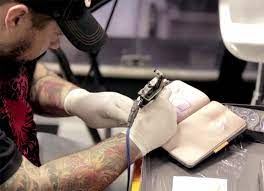There are art that lasts forever. They mark special moments and special people in one’s life. To create these permanent markings, tattoo artists need strong skills. They must be good at drawing and at translating those drawings onto the skin.

Also, they need to adapt their skills to what their clients want. So, many artists practice their art on paper before they move to the skin.
Practice on paper
Drawing is a central part of tattooing. It can help you find your style, learn how to sketch what clients want, and improve your work with shades.
You can also learn about different tattoo techniques. Besides paper, tattoo artists can practice on 3D objects or synthetic skin. This allows them to get better and try out new equipment safely.
Many tattoo artists also use transfer paper to improve their skills. Most shops now have thermal copiers or printers that create stencils from computers. This particular type of paper has special ink on it. This ink helps the artist place designs on a client’s skin.
Practice on fruit
Oranges, grapefruits, lemons, and honeydew melons are great for practice. Their skin can help you understand what human skin feels like.
By practicing fruit, you can get better at lining and shading. Some tattoo artists also practice on pig skin, which is cheaper and easy to find.
Some artists even use dolls from charity shops for practice. These dolls help with learning to work on awkward shapes and small designs. They can also be great for display!
Practice on your own
Many new artists first practice on themselves. One of the easiest ways to practice independently is to draw or tattoo on the affected skin. You can buy this online in sheets or books and even get it in shapes that look like different body parts.
This material isn’t exactly like human skin, but it’s close. This can help you get better at making clean lines and shading. It can also help you develop a steady hand and work faster.
Another way to practice is to draw or tattoo a friend. This can be especially helpful for learning to work with people with different skin tones and body shapes. This kind of practice is precious.

